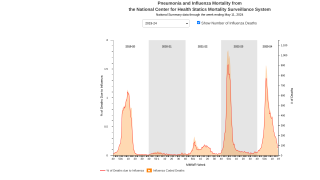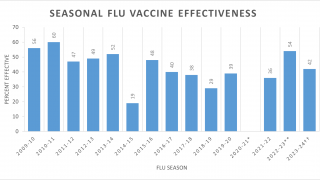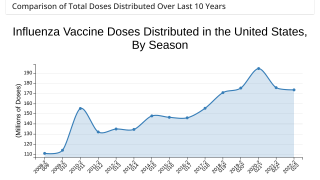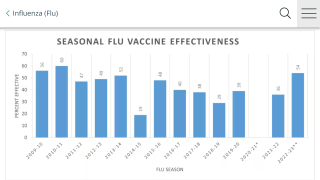‘How To Triple Flu Shot Effectiveness’ Explained

Russian scientists announced the results of various studies on how an adjuvant called Azoximer bromide increases the immunogenicity of the anti-flu vaccine.
This is important news since influenza viruses infect approximately 20 percent of the global population annually, and vaccination remains the most effective tool for preventing this viral infection.
On November 12, 2019, these scientists said in a press release that Azoximer bromide has been used in Russian anti-flu vaccines for over 20 years.
‘This adjuvant allows for a triple reduction of the antigen dosage when compared to the vaccines without any additional substances.’
Several clinical studies were carried out to confirm the efficiency of this dosage and the safety of the vaccine.
However, the requirements for the evidential base of vaccines keep getting stricter, and the studies need to go on.
Live attenuated influenza vaccines have been successfully used in Russia since 1987.
Petrovax Center for Preclinical Studies continues to carry out the research of the adjuvant's action mechanism.
The new data obtained in the course of this research was presented at the Russian-Chinese Symposium on Infectious Diseases in Saint-Petersburg on November 5, 2019.
"These results were acquired nearly 1 year ago. We studied the effect of Azoximer bromide on human dendritic cells and mice nk-cells”, commented Alexey Matveichev, with Petrovax Center.
“We also found new evidence explaining how this adjuvant helps the development of humoral immune response which is the main goal of vaccination.”
“Moreover, we studied cell-mediated immune response which is extremely important if a person gets infected and the virus starts to reproduce itself in the cells. In this case, the cell-mediated immune response helps identify and destroy the infected cells.”
"The use of adjuvants allows applying a so-called antigen-sparing strategy.”
“If more vaccines can be produced from the same amount of antigens, the manufacturer can be launched faster, and more people can be vaccinated within shorter periods of time, which is extremely important during epidemics.”
“Moreover, the antigens are foreign proteins for our bodies, and the less of them injected, the lower is the risk of side effects," concluded Matveichev.
In one of the experiments, the team used human dendritic cells provided by healthy volunteers. A vaccine with the adjuvant turned out to increase the speed of their maturing and migration.
As soon as such a cell reaches a lymph node, the immune response starts to develop, and body defenses begin to form. Speed is the issue here, especially in the latter stages of a pre-epidemic period, or at increased risks of a pandemic.
Vaccination with traditional inactivate influenza vaccines (IIV) or live-attenuated influenza vaccines (LAIV) remains the main strategy in the control of annual seasonal epidemics, but it does not offer protection against new influenza viruses with pandemic potential, those that have shifted, commented researchers in a February 2019 study.
Moreover, the continual antigenic drift of seasonal circulating influenza viruses, causing an antigenic mismatch that requires yearly reformulation of seasonal influenza vaccines, seriously compromises vaccine efficacy.
Therefore, the quick optimization of vaccine production for seasonal influenza and the development of new vaccine approaches for pandemic viruses is still a challenge for the prevention of influenza infections.
According to these Russian scientists, the potential use of this adjuvant is not limited to anti-flu vaccines.
Previous research on adjuvants has shown its ability to activate the immune response to a wide range of other socially significant pathogens that affect both humans and animals.
Vaccine Research published by Precision Vaccinations
Our Trust Standards: Medical Advisory Committee


























